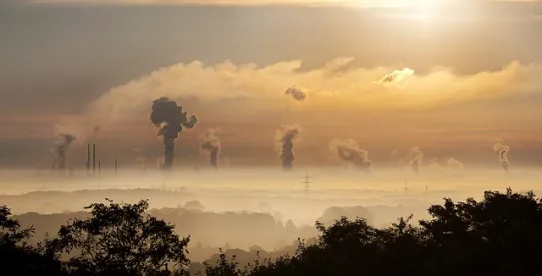On June 25, 2019, US EPA issued a proposed rule that would reverse the “once in, always in” policy for sources of hazardous air pollutants (HAP) that has been in place for more than 20 years. The rulemaking formalizes a January 2018 US EPA memorandum repealing the policy, an action that was challenged by environmental groups and is currently before the D.C. Circuit Court of Appeals. The petitioners claim that the memorandum conflicts with the structure and purpose of Section 112 of the Clean Air Act (CAA). The court heard oral arguments on April 1, 2019, but has not yet ruled. To the extent that petitioners claim the memorandum should have been subject to notice and comment, US EPA’s proposed rule may answer that challenge. However, the petition raises substantive issues related to whether the policy repeal is consistent with the CAA and the court’s ruling on these issues will likely affect the outcome of this rulemaking.
In the “once in, always in” policy, originally published in a 1995 memorandum, US EPA took the position that facilities that are major sources of HAP on the first compliance date of an applicable MACT standard must comply permanently with that standard, even if the source were to subsequently become an area source by limiting its potential to emit. In that memorandum, US EPA stated that the policy was the most natural reading of the language and structure of the Clean Air Act and a contrary reading would allow a source installing MACT to “backslide” from MACT control levels by operating only enough to reduce emissions below the major source threshold, thereby transitioning to area-source status and eliminating the MACT obligation.
The 2018 memorandum and the new proposed rule read the CAA to allow a source that does not meet the major source threshold to be treated as a minor source regardless of whether it had previously been classified as “major.” This means that a major source that takes an enforceable limit on its potential to emit or otherwise takes measures to bring its HAP emissions below the applicable threshold can be reclassified as an area source no matter when the source may choose to limit its potential to emit. US EPA justifies this reading as consistent with the plain language of the Clean Air Act by relying on the statutory definitions of “major source” and “area source,” which do not contain any language that “fixes” a source’s status at any particular point in time, nor do they preclude a source from changing its status.
Parties opposed to US EPA’s approach have argued that reclassification will allow major sources that reclassify to area sources to increase their emissions above what they could emit if they continued to be major sources. In the proposed rule, US EPA acknowledges that there are possible scenarios in which emissions could increase upon reclassification but finds that, in analyzing the 34 sources that have reclassified or are in the process of reclassifying since the issuance of the 2018 memorandum none will increase their emissions as a result of reclassification. Further, if US EPA determines that emissions are inadequately controlled following reclassification, the Agency can impose emission limits on area sources.
In addition to codifying the reclassification policy, the proposed rule would amend the definition of “potential to emit” to recognize the availability of non-federally enforceable limits (e.g., state only enforceable limits) for purposes of Section 112 applicability. The rule also proposes adding provisions to address the situation in which a source reclassifies from major to area source status and then reverts back to major source status. In that case, a major source that reclassifies to an area source will become subject to applicable area source requirements immediately upon becoming an area source if the first compliance date of the area source requirements has passed. If the area source then reverts back to its previous major source status, the source must meet major source requirements immediately upon reclassifying back to major source status. In certain circumstances, such as where the major source requirements have changed in the interim such that the source must undergo a physical change to comply, the source would be allowed extra time to achieve compliance. The proposed rule also specifies that status reclassification would not affect a source’s liability or any enforcement actions for a source’s past violations of major source requirements that occurred prior to the source’s reclassification.
If finalized, the new policy could reduce testing, reporting, and recordkeeping requirements imposed on facilities, as well as provide the industry with increased regulatory certainty borne from subjecting the policy to formal rulemaking procedures. US EPA is soliciting comment on numerous aspects of the proposed rule, and there will be a public comment period of 60 days from the date the rule is officially published in the Federal Register.




 />i
/>i
